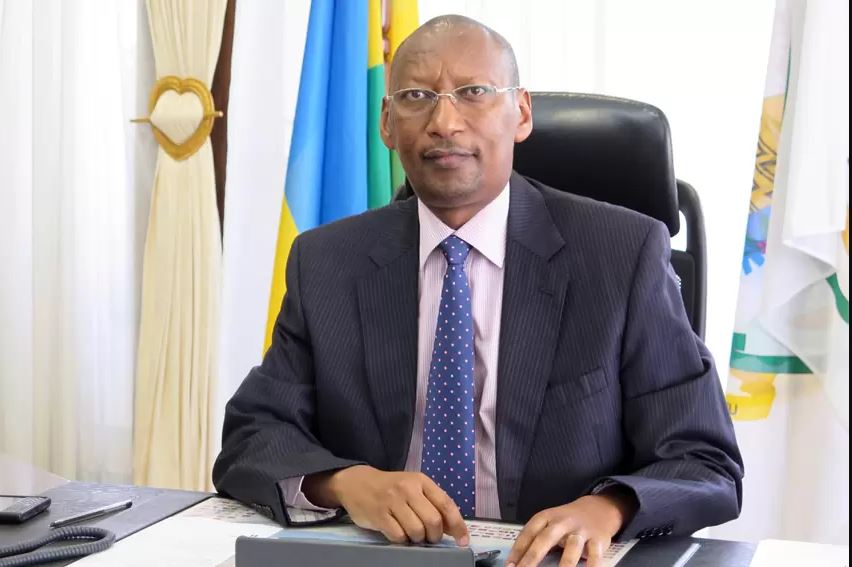
Governor of Central Bank, John Rwangombwa
Rwanda’s economy is holding its own, despite adverse global winds, and has the resilience to weather the unfavourable climate, until those winds begin to blow fair.
That is the verdict from the National Bank’s Monetary Policy Committee (MPC), after its meeting to review projections made in the second quarter, and gauge the economic climate, in the third quarter, and beyond.
First the good news. After the ravages of the Sars-Cov-2 pandemic, on the world’s economies, quickly followed by the first major war in Europe, for seventy years, it would have been reasonable to expect sluggish, even negative growth.
But by any objective measure, Rwanda comes near the top of the list of countries in the world, to have found the right policies, to fight against the pandemic, both as a health and economic threat.
Thanks to those polices, the most eye catching, being a notably successful vaccination campaign, supported by necessary fiscal and monetary policies, a recorded contraction in the economy, of 3.4% in 2020, was followed by growth of 10.9% in 2021 and 7.7% in 2022.
The composite Index of Economic Activities (CIEA) grew by 17.2% in the third quarter of this year, up from 10%, last year. But for continued weakness in the important agricultural sector, these figures would look even more promising. Despite that however, growth is still projected upwards, from 6.0% to 6.8%.
High inflation remains the villain of the piece, however, and how to curb it, an ongoing challenge, for central banks the world over. The drivers of the rise in inflation, are primarily international, but also some domestic developments.
Russia’s invasion of Ukraine, has led to continued hikes, in not only energy prices, but other commodities, including cereals, fertilisers and cooking oil. The continuing appreciation of the US dollar, against all other currencies, added to disruptions in global supply chains, raising costs in international trade, are also contributary factors to rising inflation.
In Rwanda, climatic conditions have destabilised the all important agricultural sector, sending food prices soaring, and feeding inflation, which is now projected to average around 13.2% for this year, 1.1 percentage points higher, than foreseen, earlier this year, in August. It is expected to remain high for the rest of the year, before coming back down, to the benchmark band of between 2 and 8 percent, towards the end of next year.
In an effort to bring down inflation, help consumer purchasing power, and maintain price stability, the central bank is employing many of the tools at its disposal, to tighten monetary policy.
The central bank rate (CBR) is raised by 50 basis points, to 6.5% from 6.0%. The reserve requirement ratio, essentially the amount of money commercial banks must hold in reserve, is brought back to 5%. It had been lowered to 4%, to help stimulate economic activity, in the aftermath of the Sars-Cov-2 pandemic.
The bank is confident that these measures, in addition to other policy implementations, will bring down inflation to the 2 to 8 percent band, in the medium term.
Rwanda’s exports rose by an impressive 39.9% in the third quarter. This was largely due to global rise in commodity prices, but it also owes to value addition in minerals, and good performance of domestically manufactured exports.
Against that however, imports also rose by 38.9% thanks to high energy costs, as well as continued economic recovery, which led to higher demand for imported intermediate and capital goods. This led to the widening of the trade deficit by 38.3%.
The poor performance in the agricultural sector, is offset by projected continued growth in industry and services.
Similarly, the financial sector remains in good health, maintaining growth, despite the lasting effects of Covid-19 on the world’s economies, rising inflation and the global instability, due to Russia’s invasion of Ukraine.
The Central Bank, as regulator, can take some credit for the stability in the financial sector. It is for instance now taken for granted, that Rwanda’s financial institutions, will, at any given time, be more than adequately capitalised.
Total assets in the sector grew by 18.8% during the period under review, with the banking sector, growing by 20.2 percent, due mainly to increased deposits.
It is smooth sailing with payment systems, and now with the upgrade of the Rwanda Integrated Payments Processing System (RIPPS), which will twenty four hours a day, seven days a week.
With some businesses yet to recover fully, from the impact of Covid-19, banks especially, are left with more Non-Performing Loans (NPLs) than they would normally expect, but there is every indication, that these will not fundamentally, affect the stability of the financial sector as a whole, or banking in particular.
The not so good news, is that there no end in sight of the war in Ukraine, which has so severely disrupted the global economies. And despite the increasing frequency of the biblical disasters, resulting from climate change, the world is yet to demonstrate that it grasps the urgency of the need for real action. These however, are beyond the remit of any central bank.

